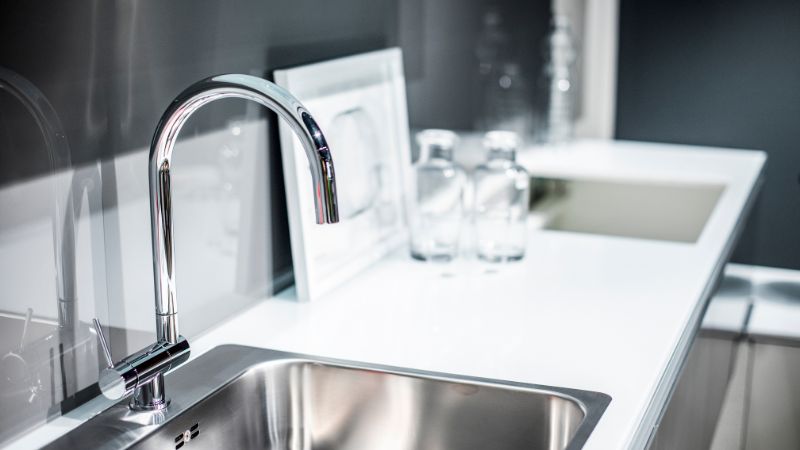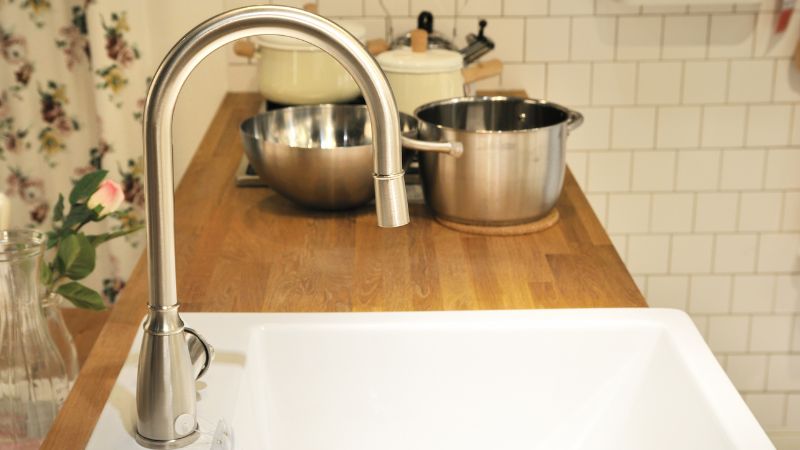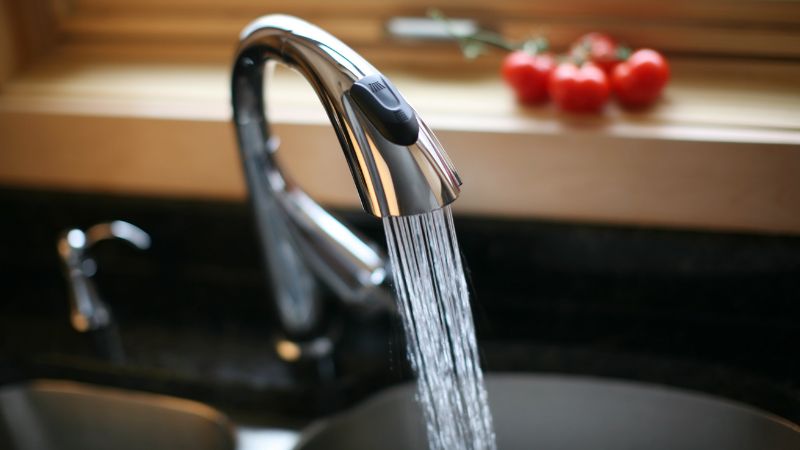Sensor faucets are a modern convenience that many homeowners are incorporating into their kitchen renovations. This article will explore the pros and cons of these smart devices and offer a guide to choosing the right one for your home. So, let’s dive into the world of sensor faucets and explore their potential for your modern kitchen!
1 What is a Sensor Faucet?
 Sensor Faucet
Sensor Faucet
A sensor faucet, also known as a smart kitchen faucet, is a convenient fixture for your kitchen sink. It is designed with motion sensors that allow water to flow without the need for a manual handle. These faucets come in two varieties: touch-sensitive and touch-free.
The touch-sensitive faucet operates on a simple principle: touch it once to turn the water on and again to turn it off. This functions similarly to the fingerprint sensor on your phone. On the other hand, the touch-free faucet uses infrared technology to detect the heat from your hands, turning the water on and off accordingly.
Sensor faucets are typically powered by batteries or a direct power source, offering unparalleled convenience and making them a popular choice for many homeowners.
2 Advantages and Disadvantages of Sensor Faucets
Advantages of Sensor Faucets
 Advantages of Sensor Faucets
Advantages of Sensor Faucets
Sensor faucets offer a host of benefits that make them a popular choice. Firstly, they exude luxury and elegance with their sleek, modern designs. Secondly, the convenience of touch-free or touch-sensitive operation cannot be overstated, as it eliminates the need to touch handles, especially when your hands are dirty.
These faucets also reduce the likelihood of handle damage over time. Additionally, sensor faucets are incredibly water-efficient, thanks to their precise automatic shut-off feature, ensuring water conservation even if you forget to turn off the faucet after use.
Furthermore, sensor faucets contribute to a healthier home environment by minimizing the risk of bacterial transmission through handle contact, thus protecting your family’s well-being.
Disadvantages of Sensor Faucets
 Disadvantages of Sensor Faucets
Disadvantages of Sensor Faucets
While sensor faucets offer numerous advantages, it’s essential to consider their potential drawbacks. Firstly, they may increase energy costs, as they typically run on batteries or require a power source.
Additionally, unlike traditional faucets, sensor faucets often offer a fixed water temperature, limiting your ability to adjust the temperature according to your needs. Lastly, while technology has made these faucets more affordable, they still tend to be more expensive than their conventional counterparts.
3 How to Choose a Sensor Faucet
 Choosing a Sensor Faucet
Choosing a Sensor Faucet
When selecting a sensor faucet, it’s advisable to opt for well-known brands specializing in smart home fixtures. Choose a faucet powered by batteries to minimize electrical risks. Look for features like durability, elegant design, and anti-limescale technology to ensure a consistent flow of clean water.
Additionally, consider a faucet with an aerated stream to reduce noise and prevent water from splashing out of the sink. With these factors in mind, you’ll be well on your way to choosing the perfect sensor faucet for your modern kitchen!
Now you’re equipped with the knowledge of the pros and cons of sensor faucets and how to choose the right one. We hope this article has provided valuable insights as you consider upgrading your kitchen with this smart and convenient fixture.

































